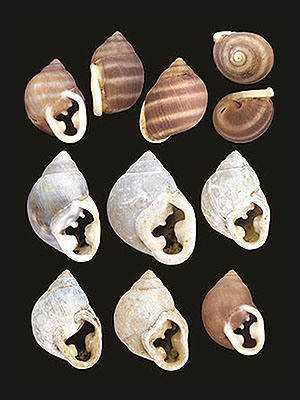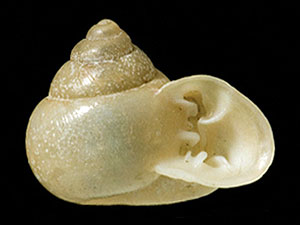Ramage’s Noronha Snail (Hyperaulax ramagei)
Ramage’s Noronha Snail was described in 1890; it is only known from the main island of the Fernando de Noronha archipelago offshore north-eastern Brazil, where they were found to be “imbedded in sandy mud on a raised reef and have a semi-fossilized appearance”. [1]
The species must have gone extinct somewhat prior to their description as many specimens appeared quite fresh and still were bearing an intact periostracum (see photo below).
***
The genus contains one additional species, also endemic to the same archipelago, Ridley’s Noronha snail (Hyperaulax ridleyi (E. A. Smith)); this species is still alive today. [2][3]
*********************

https://creativecommons.org/licenses/by/4.0/
*********************
References:
[1] H. N. Smith: Mollusca. In: Ridley HN, ed. Notes on the Zoology of Fernando Noronha. Zoological Journal of the Linnean Society 20: 473-570. 1890
[2] A. V. L. Freitas; M. S. Miranda; f. D. Passos: Land snails of the Fernando de Noronha archipelago, Brazil. American Malacological Bulletin 37: 66-69. 2019
[3] Rodrigo B. Salvador; Daniel C. Cavallari; Carl C. Christensen; André V. L. Freitas; Marcel S. Miranda; Flávio D. Passos: The endemic land snails of the Fernando de Noronha archipelago, Brasil. Tentacle 30: 6-8. 2022
*********************
edited: 22.01.2024


